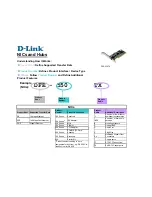
10G Core Routing Switch User Manual
陈泽科技有限公司
- - 67 - -
www.stephen-tele.com
help.
Continue with diagnosis 3 if the second step is completed.
3) Multicast forwarding table set up on the bottom layer is wrong.
Enable IGMP Snooping group in user view and then input the command display gmp-snooping group to check if
MAC multicast forwarding table in the bottom ayer and that created by IGMP Snooping is consistent. You may also
input the isplay mac vlan command in any view to check if MAC multicast forwarding able under vlanid in the
bottom layer and that created by IGMP Snooping is onsistent.
If they are not consistent,please contact the maintenance personnel for help.
IGMP Configuration
IGMP Overview
Introduction to IGMP
Internet Group Management Protocol (IGMP) is a protocol in the TCP/IP suite responsible for management of IP
multicast members. It is used to establish and maintain multicast membership among IP hosts and their directly
connected neighboring routers. IGMP excludes transmitting and maintenance of membership information among
multicast routers, which are completed by multicast routing protocols. All hosts participating in multicast must
implement IGMP.
Hosts participating in IP multicast can join and leave a multicast group at any time. The number of members of a
multicast group can be any integer and the location of them can be anywhere. A multicast router does not need and
cannot keep the membership of all hosts. It only uses IGMP to learn whether receivers (i.e., group members) of a
multicast group are present on the subnet connected to each interface. A host only needs to keep which multicast
groups it has joined.
IGMP is not symmetric on hosts and routers. Hosts need to respond to IGMP query messages from the multicast router,
i.e., report the group membership to the router. The router needs to send membership query messages periodically to
discover whether hosts join the specified group on its subnets according to the received response messages. When the
router receives the report that hosts leave the group, the router will send a group-specific query packet (IGMP Version
2) to discover whether no member exists in the group.
Up to now, IGMP has three versions, namely, IGMP Version 1 (defined by RFC1112), IGMP Version 2 (defined by
RFC2236) and IGMP Version 3. At present, IGMP Version 2 is the most widely used version.
IGMP Version 2 boasts the following improvements over IGMP Version 1:
I. Election mechanism of multicast routers on the shared network segment
A shared network segment means that there are multiple multicast routers on a network segment. In this case, all
routers running IGMP on the network segment can receive the membership report from hosts. Therefore, only one
router is necessary to send membership query messages. In this case, the router election mechanism is required to
specify a router as the querier. In IGMP Version 1, selection of the querier is determined by the multicast routing
protocol. While IGMP Version 2 specifies that the multicast router with the lowest IP address is elected as the querier
when there are multiple multicast routers on the same network segment.
















































